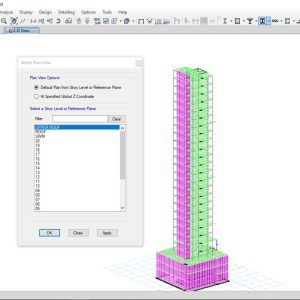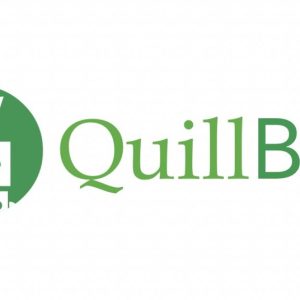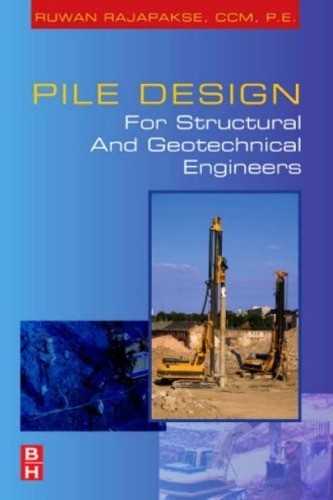Preface
-
 MS Office Professional Essential Training$200.00
MS Office Professional Essential Training$200.00 -
 Primavera P6 Professional Training Course$250.00
Primavera P6 Professional Training Course$250.00 -
Product on sale
 20+ Story High Rise BuildingOriginal price was: $39.99.$9.99Current price is: $9.99.
20+ Story High Rise BuildingOriginal price was: $39.99.$9.99Current price is: $9.99. -
 CSI SAFE Essential Training Course$250.00
CSI SAFE Essential Training Course$250.00 -
 CSI ETABS Essential Training Course$350.00
CSI ETABS Essential Training Course$350.00
Pile design is mostly about application of engineering concepts rather
than use of elaborate mathematical techniques. Most pile design work
can be done with simple arithmetic. I have provided necessary equations
and concepts in a manner so that the reader would be able to
refer to them with ease. All chapters are provided with plethora of
design examples. The solutions to design examples are given in a step
by step basis with many illustrations.
In geotechnical engineering, formulas and methodologies change
significantly from sandy soils to clay soils. I made all attempts to
separate equations based on soil type. Different pile types also would
affect the design methods used. As often the case, one may find mixed
soil conditions. I have provided necessary theory and design examples
to tackle pile design in mixed soil conditions.
This book is mainly aimed at practicing geotechnical engineers,
graduate and undergraduate students who are planning to become
geotechnical engineers. The book should be a great addition to the
civil professional engineer exam in USA or the chartered engineer
exam in commonwealth countries. This book would also be of interest
to structural engineers and architects who may run into piling work
occasionally.
All objects and structures transfer their load either directly or indirectly to the earth. The capacity of the earth to support such loads depends on the strength and stability of the supporting soil or rock materials. Pile foundations are the part of a structure used to carry and transfer the load of the structure to the bearing ground located at some depth below ground surface. There are many texts on pile foundations. Generally, these books are complicated and difficult to understand. Easy to use and understand, this book covers virtually every subject concerning pile design, featuring techniques that do not appear in other books on the subject. The book contains design methods with real life examples on pin piles, bater piles, concrete piles, steel piles, timber piles, auger cast piles, underpinning design, seismic pile design, negative skin friction and design of Bitumen coated piles for negative skin friction and many other subjects. The book is packed with design examples, case studies and after construction scenarios are presented for the reader’s benefits. This book enables the reader to come away with a complete and comprehensive understanding of the issues related to the design, installation and construction of piles. * Handy guide for engineers perparing the professional engineer (PE) exam. * Nomrous design examples for sandy soils, clayey soils, seismic loadings * Methodologies and case studies for different pile types
Table of Contents
cover.jpg……Page 1
Preface……Page 2
Introduction to Pile Selection……Page 3
Literature Survey……Page 4
Site Visit……Page 6
International Building Code (IBC)……Page 7
Conversion of Soils to Rock……Page 8
SPT – N (Standard Penetration Test Value) and Friction Angle……Page 9
Mat Foundations……Page 11
Foundation Selection Criteria……Page 12
Nondisplacement Piles……Page 15
Timber Piles……Page 16
Timber Pile Decay-Biological Agents……Page 17
Preservation of Timber Piles……Page 18
Splicing of Timber Piles……Page 19
Splicing of H-Piles……Page 21
Closed-End Pipe Piles……Page 22
Open-End Pipe Piles……Page 23
Telescoping……Page 24
Reinforced Concrete Piles……Page 25
Hollow Tubular Section Concrete Piles……Page 26
Splicing of Concrete Piles……Page 27
Delta Piles……Page 28
Compressed Base Type……Page 29
Capacity of Grouted Base Piles……Page 30
Mandrel-Driven Piles……Page 31
Method 2……Page 32
Uncased Concrete and Timber Piles……Page 33
Materials Used……Page 34
Reference……Page 35
CASE 1……Page 36
CASE 2……Page 37
Design of Pile Foundations……Page 39
Pile Design in Sandy Soils……Page 40
Description of Terms……Page 41
Equations for End Bearing Capacity in Sandy Soils……Page 43
Kulhawy (1984)……Page 44
Equations for Skin Friction in Sandy Soils……Page 46
Design Examples……Page 49
End Bearing Capacity……Page 59
Modified Meyerhof Equation……Page 60
Meyerhof Equations for Skin Friction……Page 61
Parameters that Affect the End Bearing Capacity……Page 63
Critical Depth for Skin Friction (Sandy Soils)……Page 64
Reasons for Limiting Skin Friction……Page 65
Critical Depth for End Bearing Capacity (Sandy Soils)……Page 66
References……Page 70
Pile Design in Clay Soils……Page 71
Shear Strength (Clays)……Page 73
Cohesion in Clay Soils……Page 74
Unconfined Compressive Strength Test……Page 75
Parameters……Page 76
References……Page 77
American Petroleum Institute (API) (1984)……Page 78
Equations Based on Vertical Effective Stress → fult = beta x sigma prime……Page 79
Kolk and Van der Velde Method (1996)……Page 80
References……Page 81
Computation of Skin Friction in Bored Piles……Page 82
References……Page 83
Case Study: Foundation Design Options……Page 87
Foundation Option 1: Shallow Footing Placed on Compacted Backfill……Page 88
Foundation Option 2: Timber Piles Ending on Sand and Gravel Layer……Page 89
Foundation Option 4: Belled Piers Ending in Sand and Gravel……Page 90
Foundation Option 5: Deep Piles Ending in Till or Shale……Page 91
Foundation Option 6: Floating Foundations Placed on Sand and Gravel (Rafts)……Page 92
Maximum Allowable Pile Loads……Page 93
Preservatives……Page 95
Allowable Stresses in Timber……Page 96
Allowable Working Stress for Round Timber Piles……Page 97
Timber Pile Case Study……Page 98
Static Analysis……Page 99
Bridge Pile Design……Page 103
References……Page 104
Design Concepts……Page 105
Computation of Skin Friction……Page 106
Capacity of Grouted Base Piles……Page 107
Case Study: Comparison between Bored Piles and Driven Piles……Page 108
Case Study: Friction Piles……Page 110
Soil Condition at the Site……Page 111
Load Settlement Curves……Page 112
Settlement Values……Page 113
Open-End Pipe Pile Design-Semi-empirical Approach……Page 114
Skin Friction of Open-End Pipe Piles in Sandy Soils……Page 116
Theory……Page 117
Concepts to Consider……Page 118
Design Example……Page 120
Minimum Dimensions for Steel Pipe Piles……Page 122
Concrete-Filled Shell Piles……Page 123
Maximum Driving Stress……Page 124
Pile Testing……Page 125
Design Stresses and Driving Stresses……Page 126
Case Study: Prestressed Concrete Piles……Page 127
Pile Hammer Used: DELMAG D30-23 Diesel Hammer……Page 128
Driving Stresses……Page 129
Maximum Tensile Stress (lb/sq. ft)……Page 130
Uplift Forces……Page 131
Uplift Due to High Groundwater……Page 132
Load Distribution-Skin Friction and End Bearing……Page 133
End Bearing vs. Skin Friction (Typical Example)……Page 134
Brief History of Caissons……Page 136
Use of Casing……Page 137
Integrity of Caissons……Page 138
Repairing Defective Caissons……Page 139
Caisson Inspection in Soil……Page 140
Preconstruction Meeting……Page 141
Different Methods……Page 142
Weight of the Caisson……Page 144
Ignore skin friction on top and bottom of the shaft……Page 145
AASHTO Method……Page 146
End Bearing Capacity……Page 150
Modified Meyerhof Equation……Page 151
Caisson Design for Uplift Forces……Page 153
Caisson Design in Sandy Soils……Page 156
Allowable Caisson Capacity……Page 157
The AASHTO Method……Page 158
Belled Caisson Design……Page 162
Settlement of Caissons……Page 168
Methodology to Compute Axial Deformation (Sa)……Page 169
Methodology to Compute Settlement Due to Skin Friction (Sskin)……Page 171
Compute the Settlement due to Skin Friction (Sskin)……Page 173
Reference……Page 174
Introduction……Page 175
Pile Bending……Page 176
AASHTO (1992) Guidelines……Page 177
Eccentric Loading on a Pile Group……Page 180
Double Eccentricity……Page 183
Pile Group Capacity Based on Individual Pile Capacity……Page 186
Reference……Page 188
Pile Settlement Measurement……Page 189
Why Pile Compression Is Difficult to Compute……Page 190
Method to Compute the Settlement and Pile Compression……Page 191
Stiffness of Soil-Pile System……Page 192
Settlement of Single Piles (Semi-empirical Approach)……Page 194
Settlement Due to Axial Deformation……Page 195
Settlement Due to Skin Friction……Page 196
Pile Settlement Comparison (End Bearing vs. Floating)……Page 197
Design Example……Page 198
Critical Depth for Settlement……Page 199
Design Example……Page 200
Long-Term Pile Group Settlement in Clay Soils……Page 201
Design Example……Page 202
Long-Term Pile Group Settlement in Clay Soils—Janbu Method……Page 203
Janbu Equation for Clay Soils……Page 204
Design Example……Page 205
Pile Group Settlement in Sandy Soils……Page 206
Design Example……Page 207
Reference……Page 208
Design Example……Page 209
Design Example……Page 210
Janbu Equation for Sandy Soils……Page 214
Janbu Equation for Sandy Soils……Page 215
Joint Set……Page 216
Core Loss Information……Page 217
Water Color……Page 218
Joint Stains……Page 219
Strike Direction……Page 220
Oriented Coring Procedure……Page 221
Oriented Core Data……Page 222
Rock Mass Classification……Page 223
Rock Quality Designation (RQD)……Page 224
Joint Roughness Number (Jr)……Page 225
Joint Alteration Number (Ja)……Page 227
Joint Water Reduction Factor (Jw)……Page 228
Design Example 1……Page 229
Caissons under Compression……Page 230
Simplified Design Procedure……Page 231
Design Example 3……Page 233
Solution……Page 234
Reference……Page 236
Design Strategies……Page 237
Modeling of Skin Friction Using Winkler Springs……Page 238
Lateral Loading Analysis-Simple Procedure……Page 239
Design Methodology of Laterally Loaded Piles……Page 240
Reference……Page 241
Introduction……Page 242
Elasticity in Soil……Page 243
Residual Stresses……Page 244
Load Distribution Inside a Pile (Small Load Applied) (Sandy Soils)……Page 245
Load Distribution Inside a Pile (Large Load Applied) (Sandy Soils)……Page 246
Computation of the Loading Inside a Pile……Page 247
Introduction……Page 249
Soil and Pile Movement (below the neutral plane)……Page 250
Location of the Neutral Plane……Page 251
Introduction……Page 252
How Bitumen Coating Would Work Against Down Drag……Page 253
Causes of Negative Skin Friction……Page 254
Bitumen Coating……Page 255
Bitumen Behavior……Page 256
Viscosity……Page 257
Designing Bitumen-Coated Piles for Negative Skin Friction……Page 258
Example……Page 259
Bitumen Behavior during Storage……Page 261
Bitumen Behavior during Driving……Page 262
Temperature……Page 263
Final Bitumen Selection……Page 264
References……Page 265
Why Pipe Piles?……Page 266
Piles in Expansive Soil……Page 268
Identification of Expansive Soils……Page 269
Pile Caps……Page 270
Introduction……Page 271
Representation of Piles in Wave Equation Analysis……Page 273
Soil Strength under Rapid Loading……Page 274
Equations for Skin Friction for Rapid Loading Condition……Page 275
Wave Equation Analysis Software……Page 276
Pile Properties……Page 277
Soil Information……Page 278
Companies……Page 279
Batter Piles……Page 280
Negative Skin Friction……Page 281
Design Example 1……Page 282
Design Example 2……Page 287
Center of Gravity of Piles……Page 289
Row 1……Page 290
Introduction……Page 293
Definitions……Page 294
Design Example……Page 295
Ultimate Pile Capacity……Page 296
References……Page 297
A Short Course on Seismology……Page 298
Horizontal Fault……Page 299
Richter Magnitude Scale (M)……Page 300
Seismic Waves……Page 301
Seismic Pile Design……Page 302
Inertial Loads……Page 303
Design of Piles for Kinematic Loadings……Page 304
Pile Bending Strain……Page 305
Seismic Pile Design for Kinematic Loads……Page 306
Seismic Pile Design-Inertial Loads……Page 310
References……Page 311
Liquefaction Analysis……Page 312
Soil Properties……Page 313
How to obtain (N1)60……Page 314
Correction Factor for Magnitude……Page 316
Correction Factor for Content of Fines……Page 317
References……Page 319
Class D, E and F……Page 320
Introduction……Page 321
Finite Element Computer Programs……Page 322
Lateral Loading Analysis-Computer Software……Page 323
Soil Parameters for Sandy Soils……Page 324
Soil Parameters for Clayey Soils……Page 325
Spile……Page 326
Engineering News Formula……Page 327
Reference……Page 329
Construction Methods……Page 330
Introduction……Page 331
Double-Acting Steam Hammers……Page 332
Single-Acting Diesel Hammers……Page 333
Double-Acting Diesel Hammers……Page 334
Hydraulic Hammers……Page 335
Mechanism……Page 336
Principle of the Vibratory Hammer……Page 338
Resonance-Free Vibratory Pile Drivers……Page 340
Pile-Driving Procedure……Page 341
Review of the Geotechnical Engineering Report……Page 342
Inspection of Pile-Driving Equipment (prior to driving and during driving)……Page 343
Pile-Driving Inspection Report……Page 344
Noise Level……Page 345
Excavate Obstructions Using a Backhoe……Page 346
Obstructions Occurring at Any Depth……Page 347
Pile Hammer Selection Guide……Page 348
Sandy Soils……Page 349
Clay Soils……Page 350
Site Conditions……Page 351
Soil Displacement During Pile Driving……Page 352
Pile Integrity Testing……Page 353
Radar Analyzer……Page 354
Use of Existing Piles……Page 355
Creation of Water-Migrating Pathways……Page 356
Utilities……Page 357
Water Jet Types……Page 361
Water Jetting in Different Soil Types……Page 362
Water Requirement……Page 363
For Rubber Hoses……Page 364
Reference……Page 365
Cost Estimate for Pile-Driving Projects……Page 366
Theory……Page 368
Pile Load Test Procedure……Page 369
Pile Load Test Data Form……Page 372
Underpinning to Stop Settlement……Page 373
Pier Underpinning……Page 374
Pier Underpinning–Construction Procedure……Page 375
Jack Underpinning……Page 377
Underpinning with Driven Piles……Page 379
Mudjacking (Underpinning Concrete Slabs)……Page 380
Underpinning: Case Study……Page 381
Pile Load Tests……Page 382
Bringing the Building Back to the Original Position……Page 383
Reference……Page 384
Seabed……Page 385
Soil Types in Continental Crust……Page 386
Pile Hammers……Page 387
Pile Hammer Selection……Page 388
Belled Piers……Page 389
References……Page 390
Tie Beams, Grade Beams, and Pile Caps……Page 391
Sizing of the Pile Cap……Page 392
Design Drawing Preparation……Page 395
Batter Information……Page 401
sdarticle_031.pdf……Page 403
SPT (N) Value and Friction Angle (φ)……Page 404
Reference……Page 405
Shear Modulus of Sandy Soils……Page 406
D50 = Size of the sieve that would pass 50% of the soil……Page 407
Reference……Page 408
-
 Turnitin Instructor with AI Detection$70.00 – $130.00
Turnitin Instructor with AI Detection$70.00 – $130.00 -
 SmartPLS 4.1 Processional | Lifetime activation key$60.00
SmartPLS 4.1 Processional | Lifetime activation key$60.00 -
 EndNote Lifetime for Windows /Mac Software Full Version$8.00 – $15.00
EndNote Lifetime for Windows /Mac Software Full Version$8.00 – $15.00 -
![Pile Design for Structural and Geotechnical Engineers 11 IBM SPSS Statistics v30 | v29 [Lifetime Activation with key]](https://civilmdc.com/wp-content/uploads/2022/03/IBM-SPSS-30-Key-300x300.jpg) IBM SPSS Statistics v30 | v29 [Lifetime Activation with key]$15.00 – $45.00
IBM SPSS Statistics v30 | v29 [Lifetime Activation with key]$15.00 – $45.00 -
 LinkedIn ALL COURSES LIFETIME Warranty$25.00
LinkedIn ALL COURSES LIFETIME Warranty$25.00 -
Product on sale
 REF-N-WRITE | Premium Account Lifetime ActivationOriginal price was: $45.00.$22.00Current price is: $22.00.
REF-N-WRITE | Premium Account Lifetime ActivationOriginal price was: $45.00.$22.00Current price is: $22.00. -
 QuillBot’s paraphrasing tool | Premium Account 6 month | + WARRANTY$12.00
QuillBot’s paraphrasing tool | Premium Account 6 month | + WARRANTY$12.00 -
 Grammarly Premium Account 6 Month |12 month$20.00 – $35.00
Grammarly Premium Account 6 Month |12 month$20.00 – $35.00 -
 TURNIT1N Student (Plagiarism Checker) – 6 Month | 1 Year | 2 Years | 3 Years | 4 Years | LifeTime$15.00 – $200.00
TURNIT1N Student (Plagiarism Checker) – 6 Month | 1 Year | 2 Years | 3 Years | 4 Years | LifeTime$15.00 – $200.00


